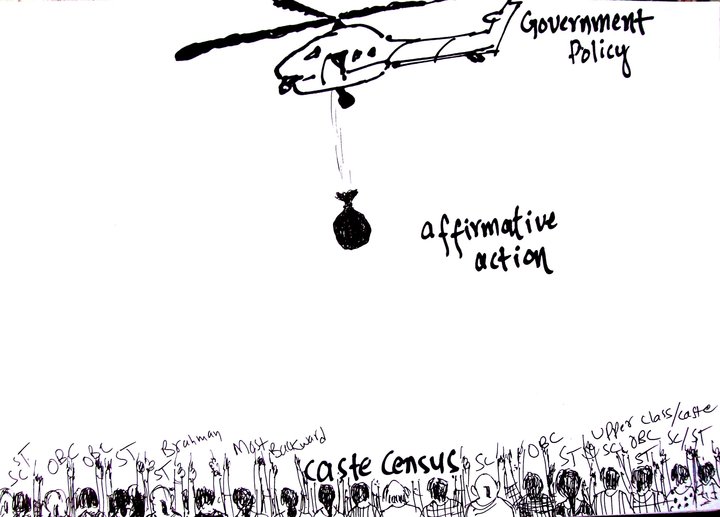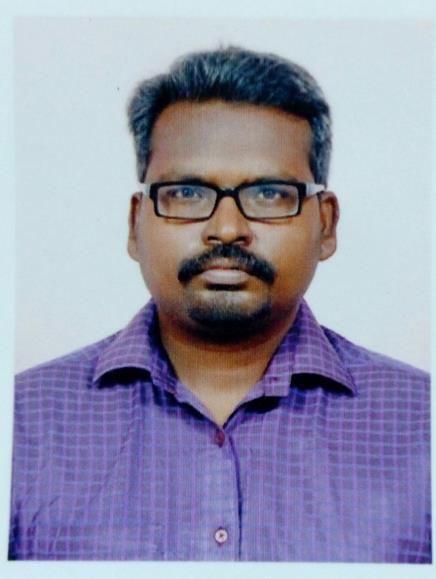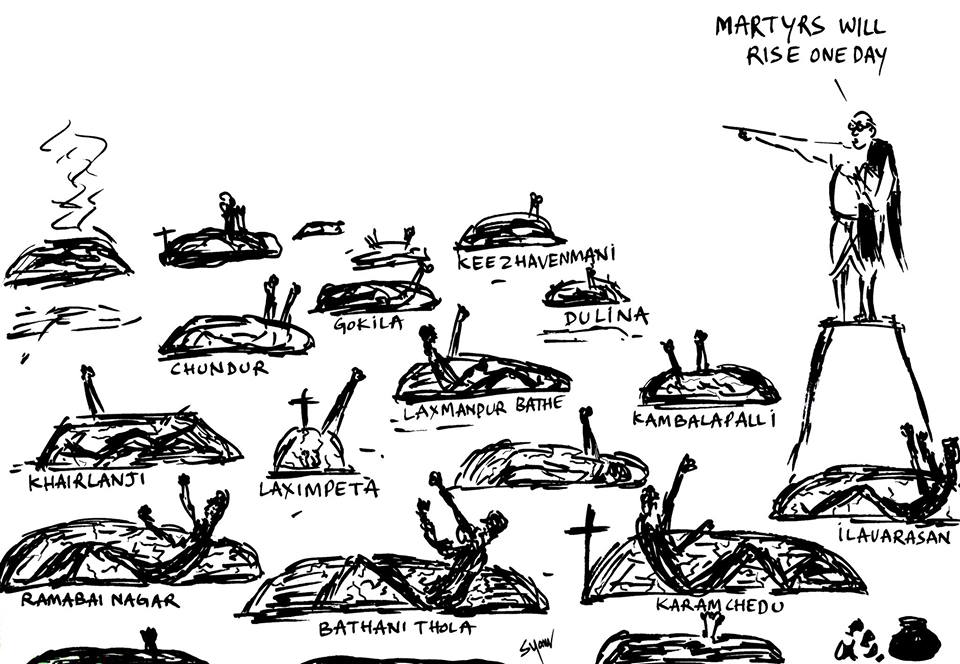Ashok Yadav
01. Overwhelming majority of population who have been discriminated against and oppressed on the basis of their caste identity since time immemorial and the history of bloody religious conflicts before, during and after independence in 1947 make social justice and secularism the two pillars on which the entire democratic structure of our country rests. In fact, social justice and secularism are twin concepts which can be separated from each other only by putting at risk the democratic polity. The action of communal forces to take out rath yatra after decision to implement Mandal commission recommendation by V P Singh government highlights hostility of communalism against social justice. The action of the then Bihar Chief Minister to arrest the rath yatri and resultant consolidation of his politics of social justice further highlights the interdependence of social justice and secularism and the support these two principles provide to our democratic polity.

02. Contrary to the elitist understanding of Mandal as divisionary, Mandal has been the greatest unifying factor post-Independence. After independence, nothing has contributed as much to strengthen national unity and integrity as Mandal. Mandal gave one name (OBC), one identity (OBC) and one universal consciousness (OBC), irrespective of religious, regional and linguistic differentiations, to fifty two percent population of India. The consolidation of Indian nationalism that the independence movement set in motion but was jolted by communal division of the country got an agent in Mandal to carry forward the unfinished task of nation building. Mandal gave fresh and powerful impetus to Indian nationalism.
03. Episodes relating to Shah Bano and Ram Mandir-Babri Mosque during 1984-89 provided wings to the forces whose conviction lay in communal nationalism. The communal nationalists made rapid progress in electoral terms and were inching towards capturing power single handedly. Mandal halted their rapid progress and forced the communal nationalists to forge national alliance with secular parties.
04. The historic role of Mandal in strengthening national unity and integrity and breaking the impulse of communal nationalists has been ignored even by the politicians and the scholars otherwise known as progressive and liberal. The strength of Mandal report lies in the fact that it did not make any separate list of OBC on the basis of their religious identity and, thus, set a standard for public policy. The reports of both first and second national backward class commissions (headed by Kaka Kalelkar and B P Mandal) have taken due care of the umbilical relation of social justice and secularism by not making any separate quota for OBC belonging to religious minority groups. What Mandal did was not new. In fact, Kaka Kalelkar, the Brahmin chairman of the first backward class commission and a veteran of freedom movement, had set the precedent for B P Mandal, an OBC.
05. What Mandal achieved for the OBC had already been conceded to the dalit by the British government under the force and pressure of Baba Saheb Bhim Rao Ambedkar led dalit awakening. This was made possible by preparation of a list of untouchable castes(called Scheduled Caste list). The pan India list of untouchable castes laid the foundation of nationwide dalit consciousness. The list that was prepared without any religious tag strengthened national feeling among untouchable castes in the Indian sub-continent.
06. However, soon after independence the united list of untouchable castes was fractured along religious lines and all non-Hindus were ejected out from the list. After some years a partial correction was made when Sikh dalits were taken back in the list. Decades later the V P Singh government at the centre brought back neo-Buddhist dalits in the SC list. But dalit Muslims and Christians are still outside the list and agitating for inclusion.
07. The then central government without learning any lesson from partition of the country did a great disservice to secular nationalism by making SC list Hindu only. Secular nationalism was the need of the hour for building of a new nation that had only three years ago ‘awakened at midnight when the world slept’ and ‘had taken a pledge with destiny’ amid holocaust on both sides of the communal divide. Secular nationalism more than anything else could have laid the foundation for a glorious destiny of India. By making the SC list an exclusionary one, destiny makers of India gave a communal start to the nation building.
08. Since 1950 the dalit Muslim and Christians have been battling for re-inclusion in the SC list. Even Mother Teresa came out in favor of restoring the original list. A number of state governments have sent sense of the legislative assembly in favor of the re-inclusion to the centre. The central government instead of rectifying the historical blunder by re-including the dalit Muslims and Christians in the SC list has again done a disservice to secular nationalism by dividing OBC quota on religious line.
09. The country had just come out of worst ever communal holocaust on both sides of the communal divide. The ejection of dalits belonging to minority religious groups reinforced the communal divide in our country. The two nation theory of Savarkar and Jinnah received official recognition in Independent India. This created a permanent rift among dalits of different religious communities. We have seen devastating results of this policy of the central government for the secular fabric of our country. In riots after riots the dalits and OBCs belonging to majority religious group targeted the dalits and OBCs of minority religious groups. This was observed most prominently in Gujarat in 2002. The united SC list could have brought dalits of all religious affiliations together and helped them during a course of period to overcome their religious antagonism. This would have rendered the communalist clueless as how to pitch Hindu dalits against their Muslim and Christian brothers and sisters.
10. The central government in the period not much after independence had got another opportunity to consolidate secular nationalism by implementing recommendations of Kaka Kalelkar First Backward Class Commission. Implementation of recommendations of first backward class commission could have brought backward castes of different religions together and prepared the ground of inter-religious brotherhood on secular basis. Un-fractured SC list in league with OBC list would have cured India permanently of the communal conflicts.
11. It is a matter of regret of enormous proportions for a nation in the making that whereas state governments barring a few implemented OBC reservation on the basis of the list that include backward castes of all religions and does not include separate quota for religious minorities, the central government not only resisted all attempts for implementation of recommendations of first and second backward class commissions for nearly four decades but after two decades of the implementation, has ruptured a secular list on religious lines. Whereas the central government should have played the role model for the states, it is the state governments who are holding mirror to the centre. Unity below at state levels but divisions at top at the centre level in the matter of OBC list with respect to religious identity of the castes in the list offsets any good work of state governments in the interest of secular nationalism.
12. Historically, reservation policy in India has set the agenda and contours of social-political mobilizations. No well meaning person with conviction in broad principles of our constitution can deny the role of reservation in deepening of democracy in India. The three fundamental principles viz. justice (social, political and economic), secularism and democracy of our republic, that also find echo in the preamble of our Constitution, have time and again been enriched by reservation policy. To reduce reservation policy to distribute jobs and seats among different caste-blocks that too with an eye on getting votes is to vulgarize the basic philosophy of reservation.
13. The configuration of caste lists has, in fact, configured caste coalitions. When Karpoori Thakur government in Bihar in 1978 gave separate reservation to most backward castes on the basis of recommendations of Mungeri Lal Commission report, this gave rise to MBC factor in politics. The assertion of MBC in OBC politics in Bihar began when they got separate reservation. In Bihar all OBC Muslims are included in MBC group. This not only ensured better representation of OBC Muslims in government jobs and education but also encouraged dialogue across the religious divide between OBCs, Muslims and Hindus. Even after emergence of MBC factor, the OBC Muslims (Pasmanda) remained marginalized in politics in Bihar. The threat of communal forces made the political environment more conducive to Muslim politics than pasmanda politics. However, after Mandal, when pasmanda movement took shape, the dialogue between Hindu and Muslim OBC acquired momentum and a new slogan- पिछड़ा-पिछड़ा एक समान, हिंदू हो या मुसलमान i.e. OBCs Are Alike, Hindu or Muslim– began to reverberate. The Bihar government in 2006 expanded reservation for MBC to Panchayati Raj and Local Bodies. This has resulted in election of hundreds of OBC Muslims as people’s representatives from those seats reserved for MBC. This has further encouraged fraternity among the Hindu and the Muslim OBC on caste-class basis.
14. The 4.5 percent OBC minority sub-quota has many positive sides which must be acknowledged even while going against it in the ultimate analysis. The minority sub-quota is a befitting reply to the Muslim fundamentalists who have always frowned upon any talk of caste-divisions in Muslim society citing egalitarianism of Islam and has thus not allowed any social reform movement in Muslim society. Ignorance of caste divisions in Muslim society is so rampant that Hindu OBCs taking benefit of OBC quota were generally unaware that OBC Muslims are also part and parcel of the OBC list until the government announcement to promulgate 4.5 percent OBC minority sub-quota. The general ignorance among the Hindu about caste divisions in Muslim society has helped the communal outfits to spread the canard that unlike Hindus the Muslim are a united lot and that, therefore, the Hindu need to unite to counter the (so called) Muslim unity. Be it 1857 or 1947, the pasmanda Muslim have always held aloft the flag of Indian nationalism at great cost. The pasmanda in Bihar joined Triveni Sangh, the first ever OBC organization in Bihar in 1930s, along with their Hindu OBC brothers and opposed elite leadership of the Congress. However, when Mohammad Ali Jinnah espoused two-nation theory and the demand for Pakistan began to rock the national awakening, the Pasmanda overcame their caste-class antagonism against the Congress and on anti-Muslim League plank; they supported the Congress led by Gandhi and Nehru. They took out a big rally in Delhi against the demand of Pakistan. However, after partition, the ungrateful Congress blinded by caste-class prejudices ignored pasmanda and promoted those upper caste Muslims whose records of opposing Muslim League’s two nation theory were abysmal. According to Late Ashfaq Hussain Ansari, the former Congress MP from Gorakhpur, out of total 7500 MPs from first to fourteenth Lok Sabha about four and half hundred MPs were Muslims and out of these only about fifty were OBC Muslims. They have got very little post-Independence. Despite their numerical predominance within the Muslim community they have remained at margin in politics, education, administration, economic, Muslim religious organisations etc. During the communal riots they suffer most. When social justice is discussed it means only Hindu OBC and dalits even though the Muslim OBC is part and parcel of the OBC list. In the wake of Mandal, the benefits of Mandal politics have not gone to the pasmanda. They have been crying from the roof top to force the people to take their cognizance. The 4.5 percent sub-quota for OBC minority is something that had never come to them. There is a feeling among them that through 4.5 percent separate quota they have for the first time got something from state and, more than that, have been recognized as a distinct social-political category. This of course is moral boosting for them. This feeling is very genuine and must be given due respect. It is also appreciable that they are not wasting their sentiments on this bounty as their reaction on the separate OBC sub-quota is guarded. They are examining what they stand to gain and lose and whether there is any trap in this as the timing of award is very inauspicious.
15. But all the benefits and logics in favor of the sub-quota is offset by the social-political implications of making public policy on the basis of religion. The role of religion in public sphere can be diminished only when public policy is progressively detached from religion. It is true that even among the OBC they have been discriminated against on the basis of their religious identity. The fear that this discrimination would increase if the OBC Muslims are treated separately is not unfounded. The majority as well as minority communalism is still very powerful in India. A public policy which is perceived as made to benefit the minority so as to get their votes gives an opportunity to the majority communalists to rake up the old bogey of Muslim appeasement which then is seized upon by Muslim fundamentalists for Muslim consolidation.
16. In the past we have seen that the saffron utilized Mandal more than the OBC based parties because the secular OBC politicians did not make any attempt on ideological plane to explain to the people that social justice detached from secularism is only a tool in the hand of people who are otherwise opposed to social justice. The saffron utilized the Mandal induced caste consciousness of the OBC people by projecting OBC leaders on the front. The communal polarization took place on the issue of Mandir and Masjid. It was not an issue very close to the OBC and dalits which therefore could not enthuse people after certain extent. Unlike Mandir-Masjid issue the issue of OBC reservation is very close to the OBC people. It is therefore not unlikely that the saffron may once again forefront the OBC leaders to incite the communal passions among the majority community OBC population. Even if the propaganda does not end up in a communal conflagration, it may check the process of coming together of backward castes of all religions and wedge a cleave between the two communities to further extent.
17. Some people opposed to 4.5 percent OBC Minorities quota are of the opinion that the Constitution of India does not have provision for religion based reservation. Words become ineffective when not matched by actions. Such groups or persons who hold that constitution does not allow religion based reservation could not oppose reservation to Muslim or minorities in South Indian states. They also did not agitate when Mandal-2 was implemented with rider that there would be no OBC reservation in educational institutions of minority status. By remaining silent on rights of OBC minorities the OBC politicians and activists in fact indulged in appeasement of elites among the minorities who were instrumental in inserting the rider clause. Those who are opposing 4.5 separate quotas in the name of maintaining OBC unity were curiously silent when they were denied reservation in minority educational institutions. The promulgators of separate 4.5 religious quota have taken advantage of ideological crisis in social justice movement that is born of considering Muslim or for that matter any religious minority group as homogenous block without appreciating the fact of caste divisions within them.
18. There is one and only one alternative formula. That is to give separate quota to most backward castes with all OBC Muslims/other minorities included along with their backward caste brothers and sisters within the overall 27 percent OBC quota. Creation of an MBC quota within the overall 27 percent OBC quota is not to create a division within OBC quota or, one may say, OBC unity, but striking a balance within the social justice movement which is poised to result in greater OBC unity. This is vital to ensure synergy among social justice, secularism and democracy. Can India meet the political-economic challenges of 21st century without this synergy?
~~~
Ashok Yadav, is an author and is associated with the All India Federation of OBC Employees Welfare Association. Cartoon by Unnamati Syama Sundar.









